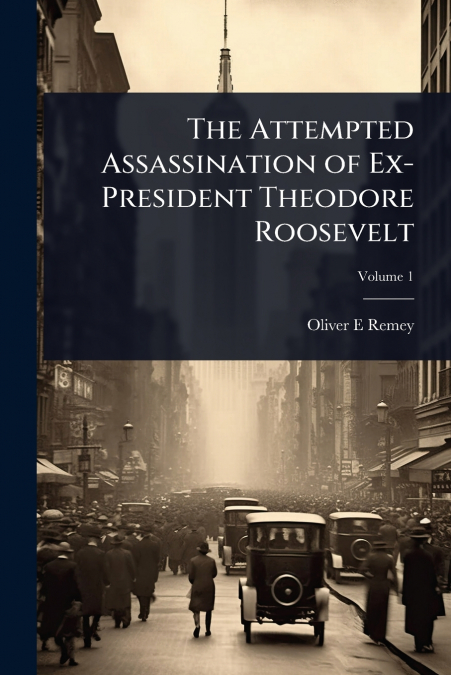
Oliver E Remey
Explore the gripping historical account of the attempted assassination of former President Theodore Roosevelt in Oliver E Remey’s ’The Attempted Assassination of Ex-President Theodore Roosevelt: Volume 1.’ This meticulously researched book delves into the shocking events of October 14, 1912, in Milwaukee, Wisconsin, when John Schrank, a saloonkeeper, shot Roosevelt during his campaign for a third term as president under the Progressive Party.Remey’s detailed narrative reconstructs the circumstances surrounding the assassination attempt, examining the motivations of the would-be assassin and the immediate aftermath of the event. Discover the incredible resilience of Theodore Roosevelt, who, despite being shot, insisted on delivering his scheduled speech, showcasing his unwavering dedication and courage. This volume provides valuable insights into a pivotal moment in American history, highlighting the political tensions and personal risks faced by leaders during the early 20th century. A must-read for history enthusiasts and anyone interested in American political history.This work has been selected by scholars as being culturally important, and is part of the knowledge base of civilization as we know it. This work was reproduced from the original artifact, and remains as true to the original work as possible. Therefore, you will see the original copyright references, library stamps (as most of these works have been housed in our most important libraries around the world), and other notations in the work.This work is in the public domain in the United States of America, and possibly other nations. Within the United States, you may freely copy and distribute this work, as no entity (individual or corporate) has a copyright on the body of the work.As a reproduction of a historical artifact, this work may contain missing or blurred pages, poor pictures, errant marks, etc. Scholars believe, and we concur, that this work is important enough to be preserved, reproduced, and made generally available to the public. We appreciate your support of the preservation process, and thank you for being an important part of keeping this knowledge alive and relevant.